
The artist’s stamp on the back indicate that the photograph was taken in Harleysville, Montgomery County, PA. Purchased at an antique store in Quakertown, PA.
Categories: Harleysville, Montgomery County, Photography

The artist’s stamp on the back indicate that the photograph was taken in Harleysville, Montgomery County, PA. Purchased at an antique store in Quakertown, PA.
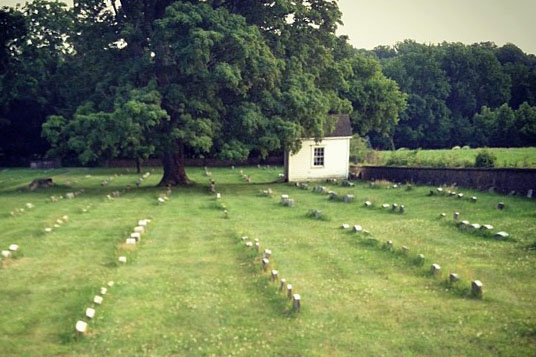
Next weekend I’ll be leading a tour at Solebury Friends burial ground. It was a big hit last year, with about 80 people in attendance. The press release is below. Hope to see you there!
WHEN: Sunday, October 27, 12 noon to 1:30 p.m., rain or shine
WHERE: Solebury Friends Meeting Cemetery
2680 North Sugan Road
New Hope, PA 18938
Local historian Jesse Crooks will lead us through the fascinating stories of those buried at Solebury Meeting Cemetery, which opened in 1809. Along with seeing the burial plots of many locally famous Quaker families like Reeder, Eastburn, Paxton, Ely, Comfort, and Kitchen, we will visit the plot sites and learn the histories of freed slaves and the unknowns in Stranger’s Row. Insightful points of Jesse’s talk cover daily elements of people’s lives and how they dealt with the great issues of the Civil War, slavery, pacifism, and the poor.
Please join us for this very popular, free event. Donations, however, are welcome!
Light refreshments will be served.
QUESTIONS? Call 215 297 5091 or email info@soleburyhistory.org.
This photo came from an album belonging to the Fellman family. A note with the original photo identifies two of the students. The first student on the left in the first row is Horace Fellman. The first student in the second row is Walter C. Fellman. Click for a larger version. The schoolhouse still stands today, but has been converted into a church.
Categories: Archives, Film, Film Preservation

Above: Princess Ladybug (1930) – Now in vaults of the Library of Congress
From the dawn of the film era in 1889 until 1951, the 35mm films projected in movie theaters were printed on highly flammable nitrate film stock. In addition to being hazardous nitrate decomposes, producing caustic gas that builds up between the layers of film. It also shrinks, eventually causing the emulsion to separate from the base, and in the later stages becomes sticky until the layers of meld into one black disc, ultimately crumbling into a rust-colored flammable powder. If stored improperly, nitrate film can even spontaneously combust. All of these properties pose significant problems to the archivists tasked with preserving film.
While preserving nitrate is difficult, it is also extremely important. It has been estimated that 90% of films from the Silent Era and half of all sound films made before before 1952 are lost forever.
Film preservationists have determined that the best way to store nitrate is to place it in a climate-controlled vault that keeps the film cool, dry, and well ventilated. Of course the storage area must also be built with fire safety as a high priority. As a result, there are few facilities that can safely deal with nitrate. The British Film Institute converted a nuclear bunker to store their nitrate. In the US, there are a few facilities. UCLA has a vault in Santa Clarita, and the MoMA has a facility in Hamlin, PA. One of the largest and best run nitrate facilities in the world is run by the Library of Congress (LOC) in Culpeper, VA, in a former Federal Reserve bunker.
I’m friends with a local film preservationist who has donated hundreds of films to the LOC over the last few decades, ranging from the hallowed work of Edison and George Méliès to campy sci-fi and westerns. He has also periodically lent out films for restoration projects, including Disney’s restoration of Fantasia. In 2009 I helped him coordinate the donation of about 200 nitrate items to the LOC, which constituted the vast majority of his remaining nitrate collection. For the next few years I gently encouraged him to give the LOC his few remaining prints, but he wanted to hold onto them.
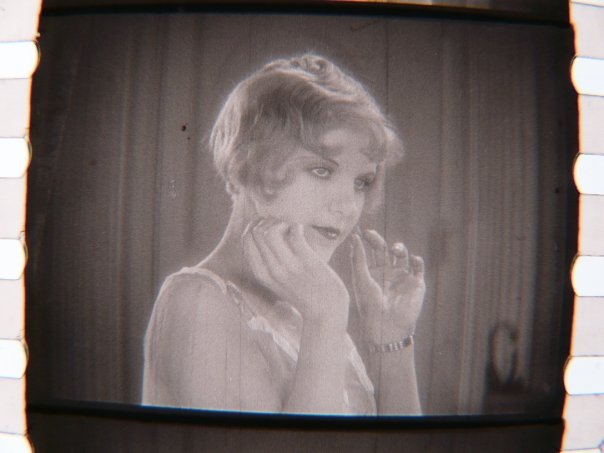
Bare Knees (1928) – A flappers era comedy donated to the Library of Congress in 2009.
I finally found my chance this spring. He read in the Vitaphone Project newsletter that the soundtrack to his print of Princess Ladybug (1930) had been found in Australia. The film was from the early sound era, before soundtracks were printed on the film itself. Instead, the sound was recorded on shellac records that were played in sync with the film using a Vitaphone player. As a result, you need both the records and the film print in order to reproduce the movie in its entirety. Because the image and the sound are so easily separated, many of the Vitaphone movies that still exist survive only partially. A film print may be sitting safely in an archive but the sound has been lost, or vice versa.
The discovery of Princess Ladybug’s soundtrack was the impetus he needed to make another donation. He wanted to send Princess Ladybug to the LOC to have it reunified with its soundtrack for the first time in over 80 years, and was willing to add a number of other prints as well. I put him in touch with the Nitrate Vault Manager, and volunteered to drive the films down to Virginia for him.
Below are the pictures of my trip:
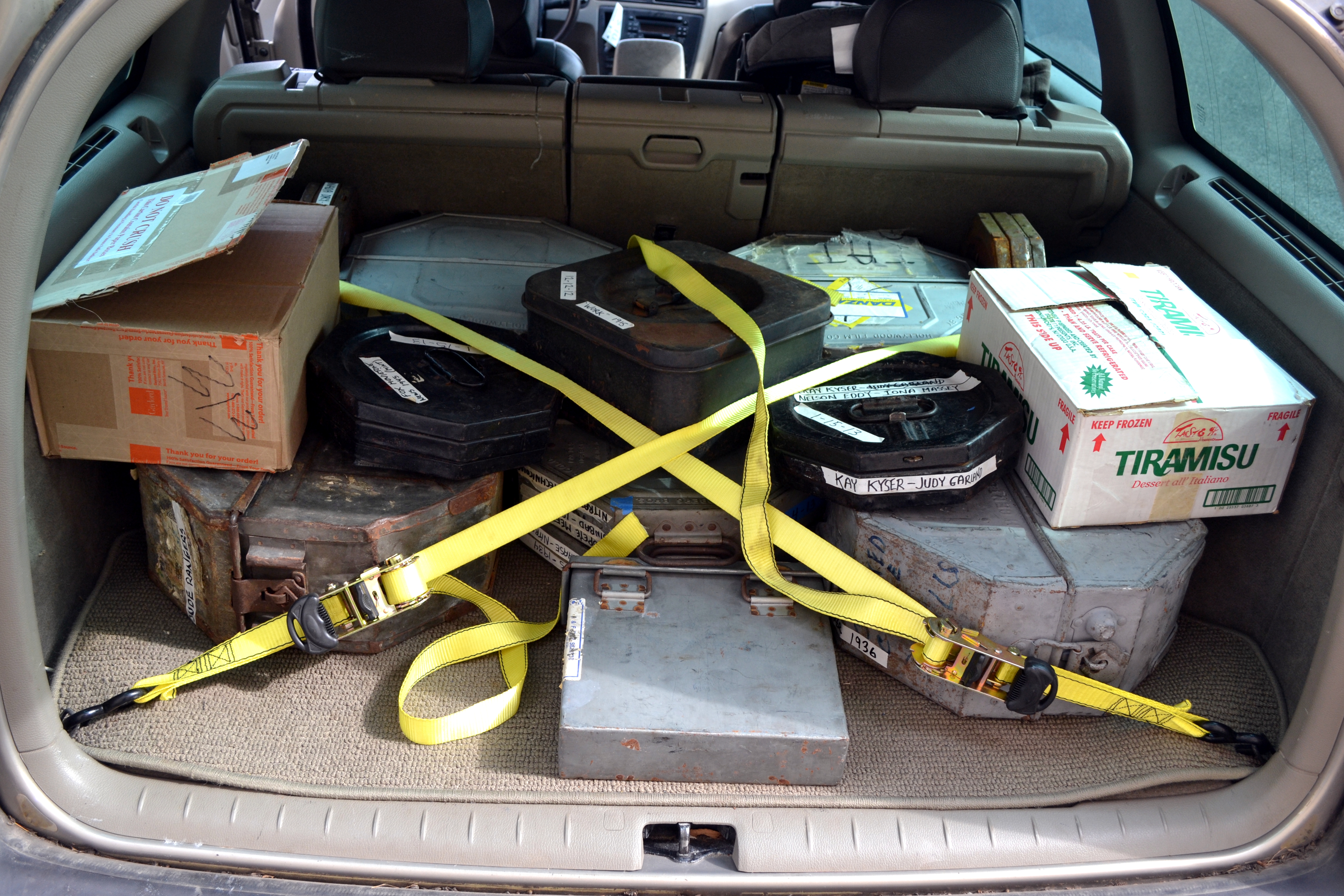
Packed to the gills with nitrocellulose. Highlights include Charlie Chaplin’s Work (1915), a mint fox newsreel showing Mussolini being hanged, the color segment from the first film to feature the three-strip Technicolor, Princess Ladybug (1930), a Vitaphone short whose audio was recently discovered, shot in the extremely rare Photocolor process, and the only existing print of Popeye Meets Sinbad, also Technicolor.
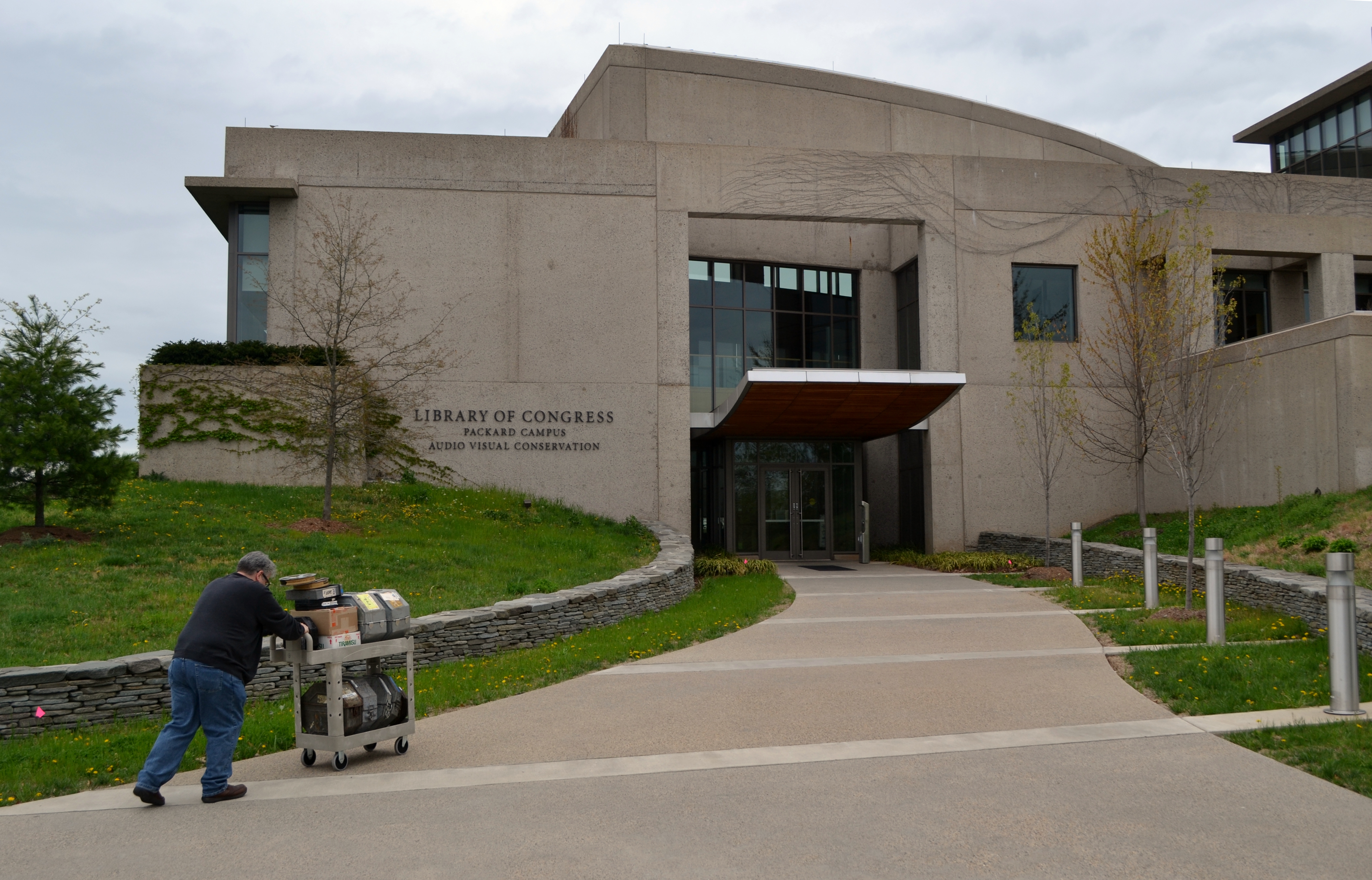
Formerly used as a Federal Reserve building, they got rid of the machine gun nest and traded the gold for silver halides. George the Nitrate Vault Manager wheels the film in through the front door.

Authorized personnel… but a little ragged after the 5 hour drive.
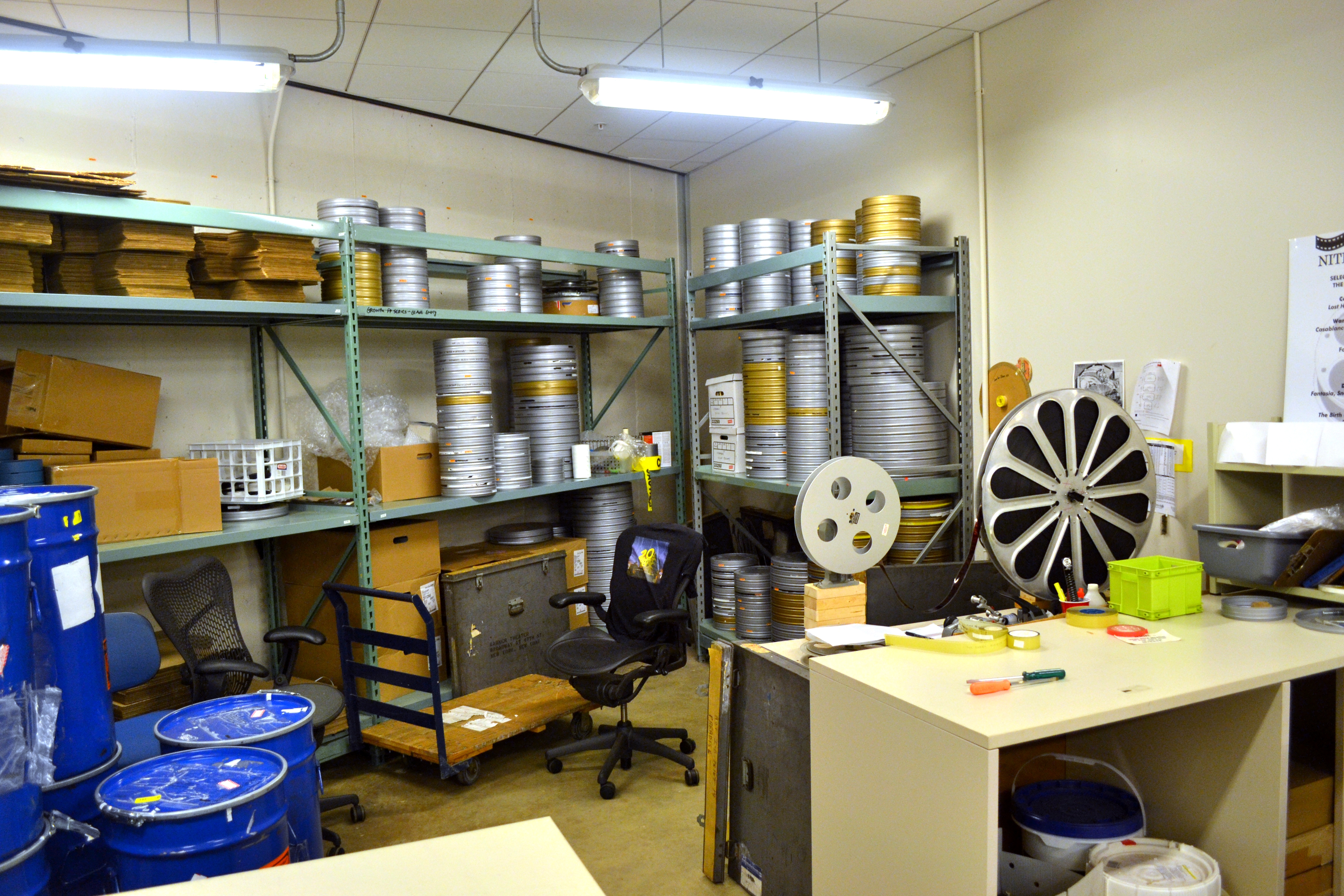
The lab just outside the nitrate vault. The reel being examined is a from Cinerama film. The Cinerama process created a super wide image by projecting three side-by-side images at once.

This is where nitrate is brought for preliminary examination. It’s also where researchers are allowed to examine nitrate prints. The vacuum cleaner (back center) is explosion proof. The blue barrel is where they dump nitrate that is beyond repair. They pour water over it and reseal the container. He cracked the lid to show me… nasty chemical slurry.
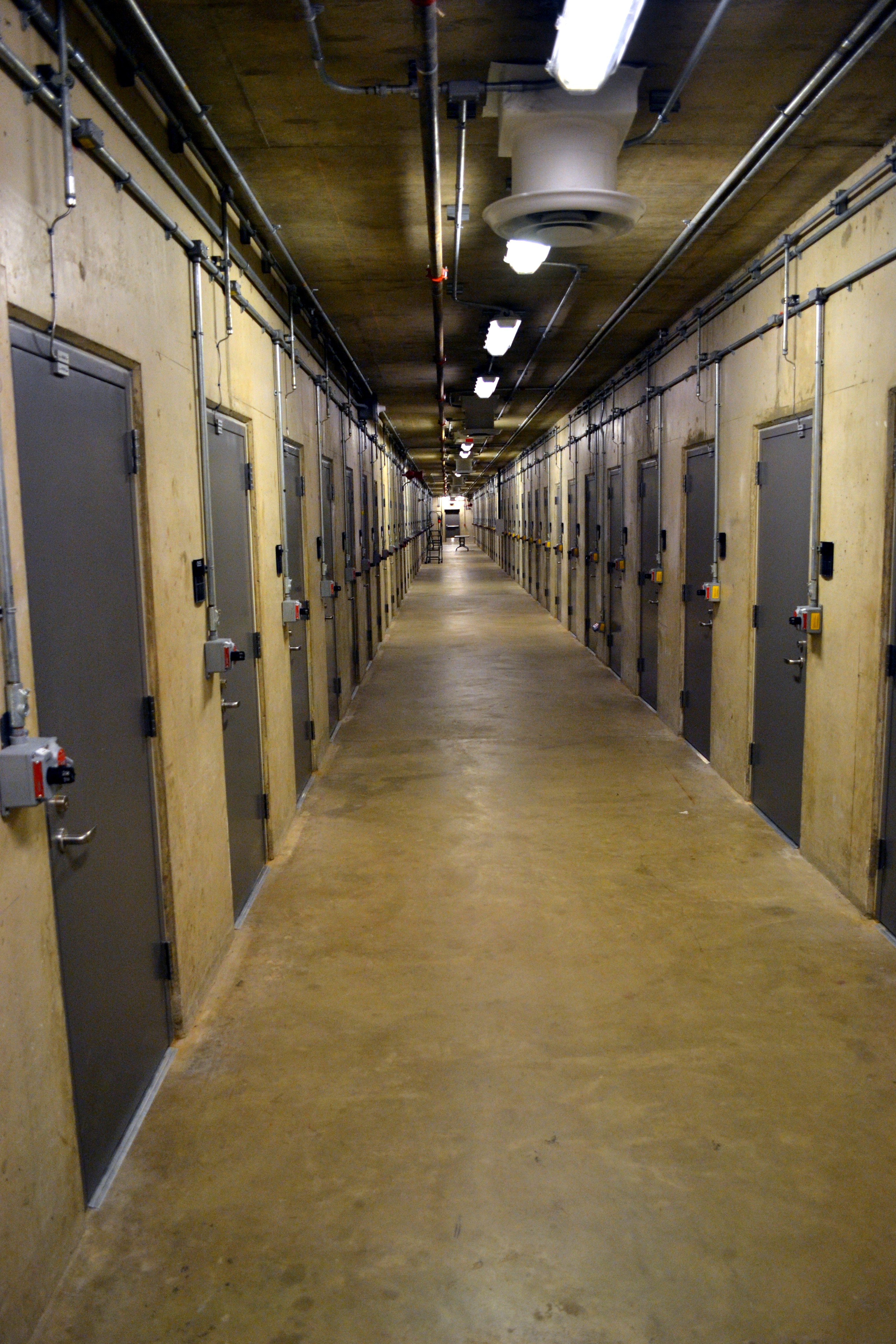
Inside the vault!
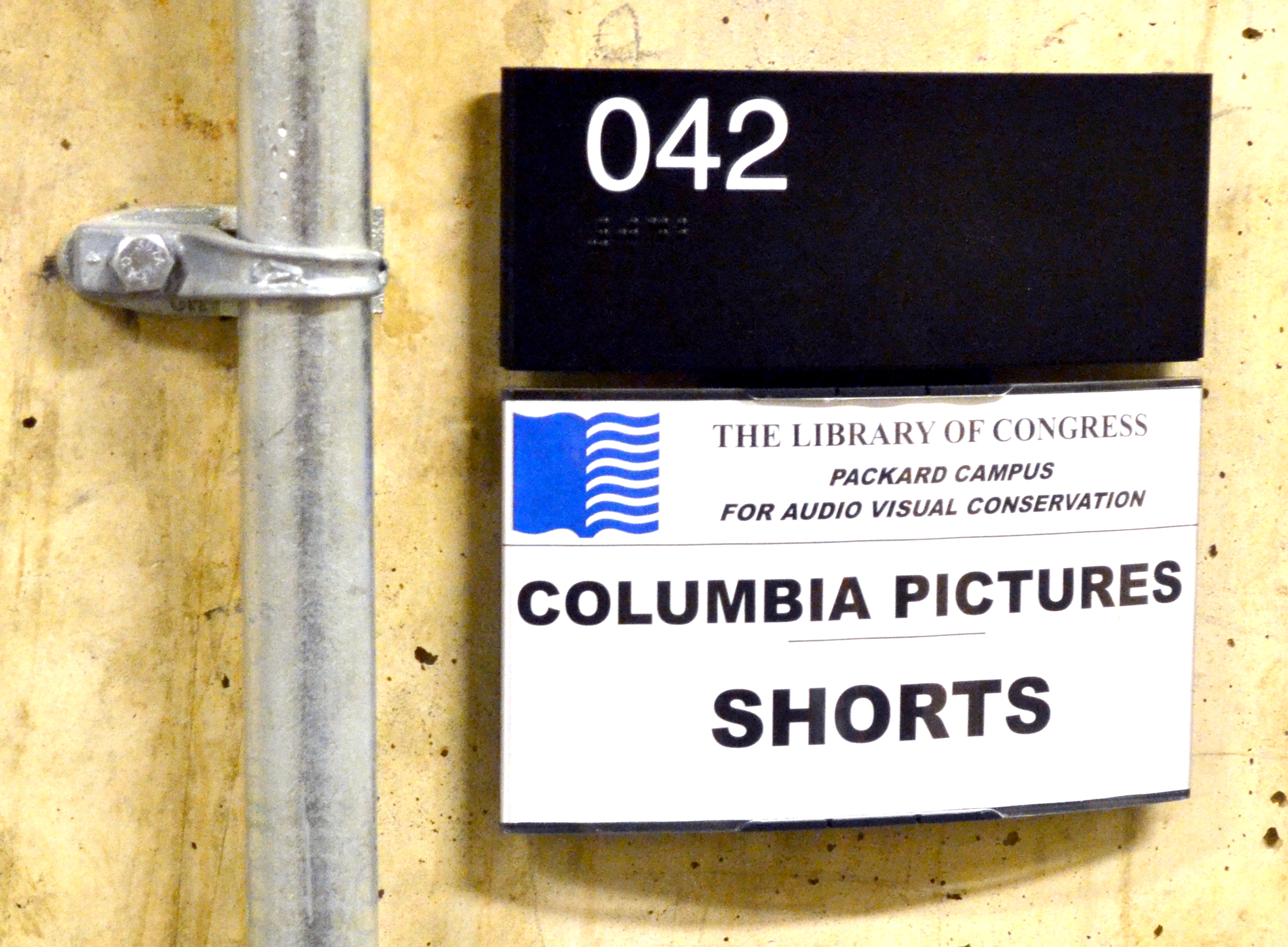
The major studio’s prints are stored in banks of consecutive storage rooms.

George explains how sheets of water pour down to contain a fire.

The shelving is designed so that if one reel ignites the fire is contained on that shelf, and the only other reel in danger is the single other reel on that shelf. The film cans are waterproof but air permeable, allowing the nitrate to off-gas. The room is ventilated so that the atmosphere in each room is completely replaced every half hour or so. It’s also cold. The nitrate is stored at 35 degrees Fahrenheit, with a 55 degree acclimatization room. Any time a reel enters or leaves the vault, it’s brought to the acclimatization room for one day. By changing the temperature in stages, they avoid letting condensation form on the film.
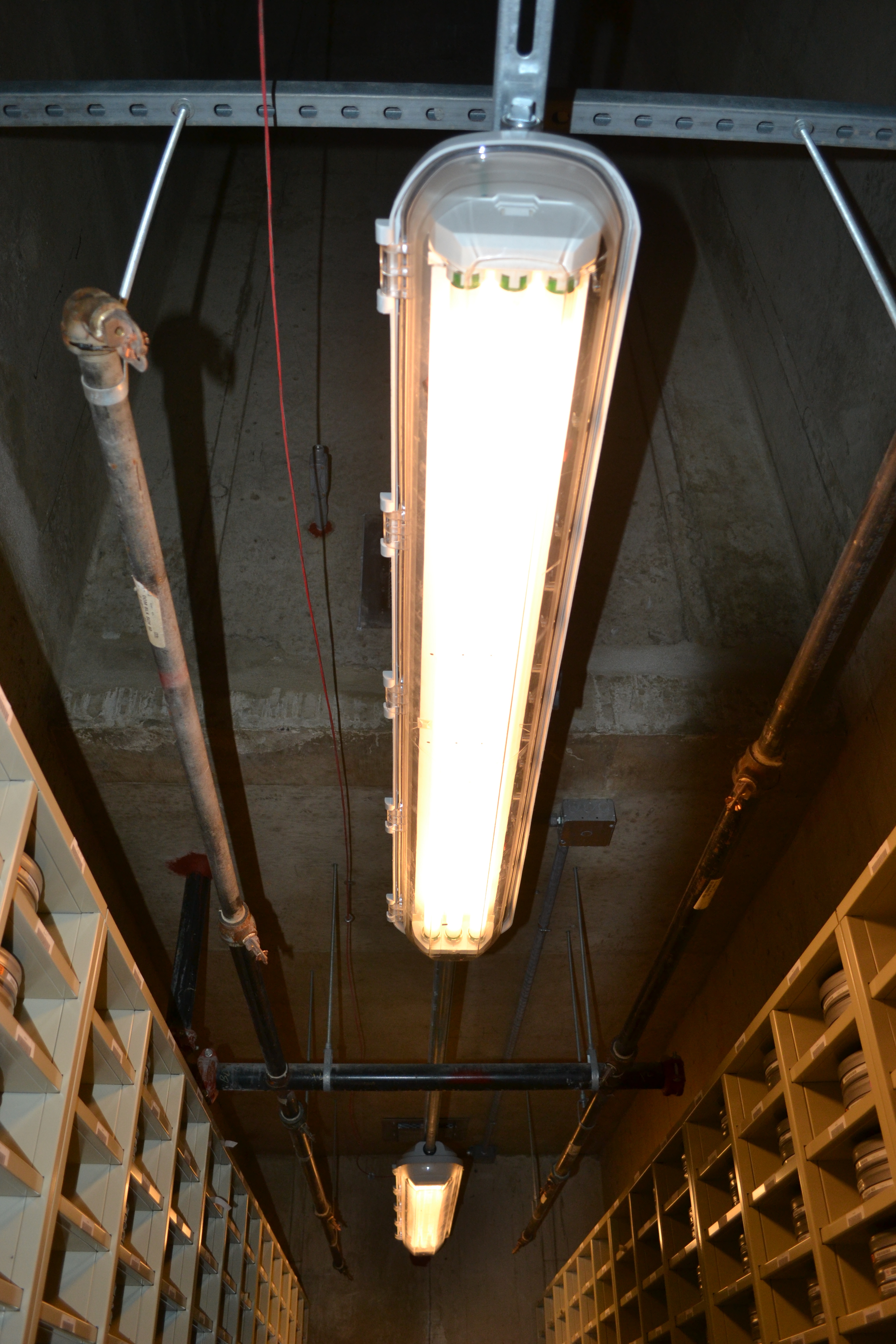
Waterlines hang above the shelves, and the lights are completely sealed to prevent an electric shock from igniting the film.
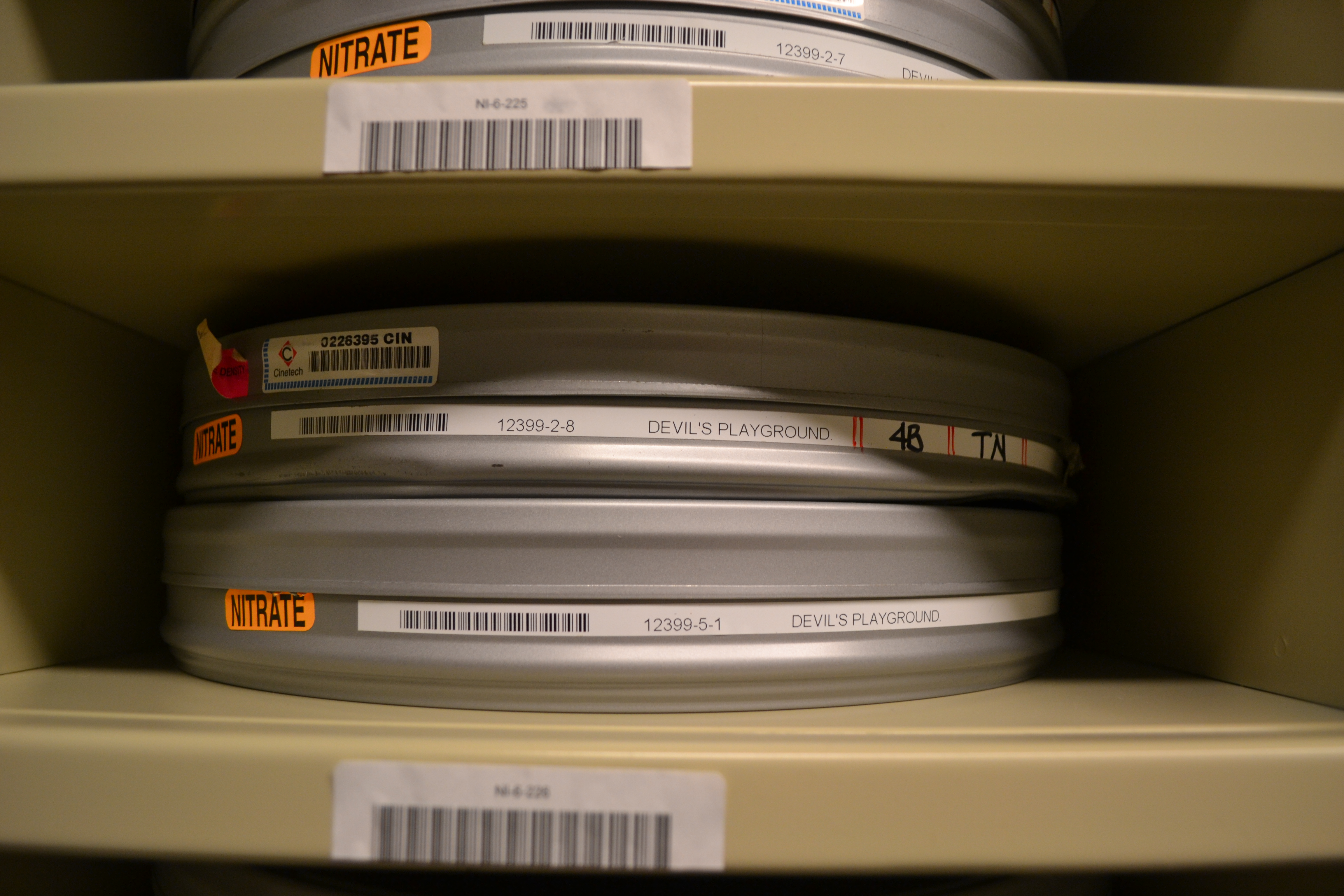
Devil’s Playground taunts us with the potential hellfire of a nitrate eruption.

Unknown Circa 1904 Romance
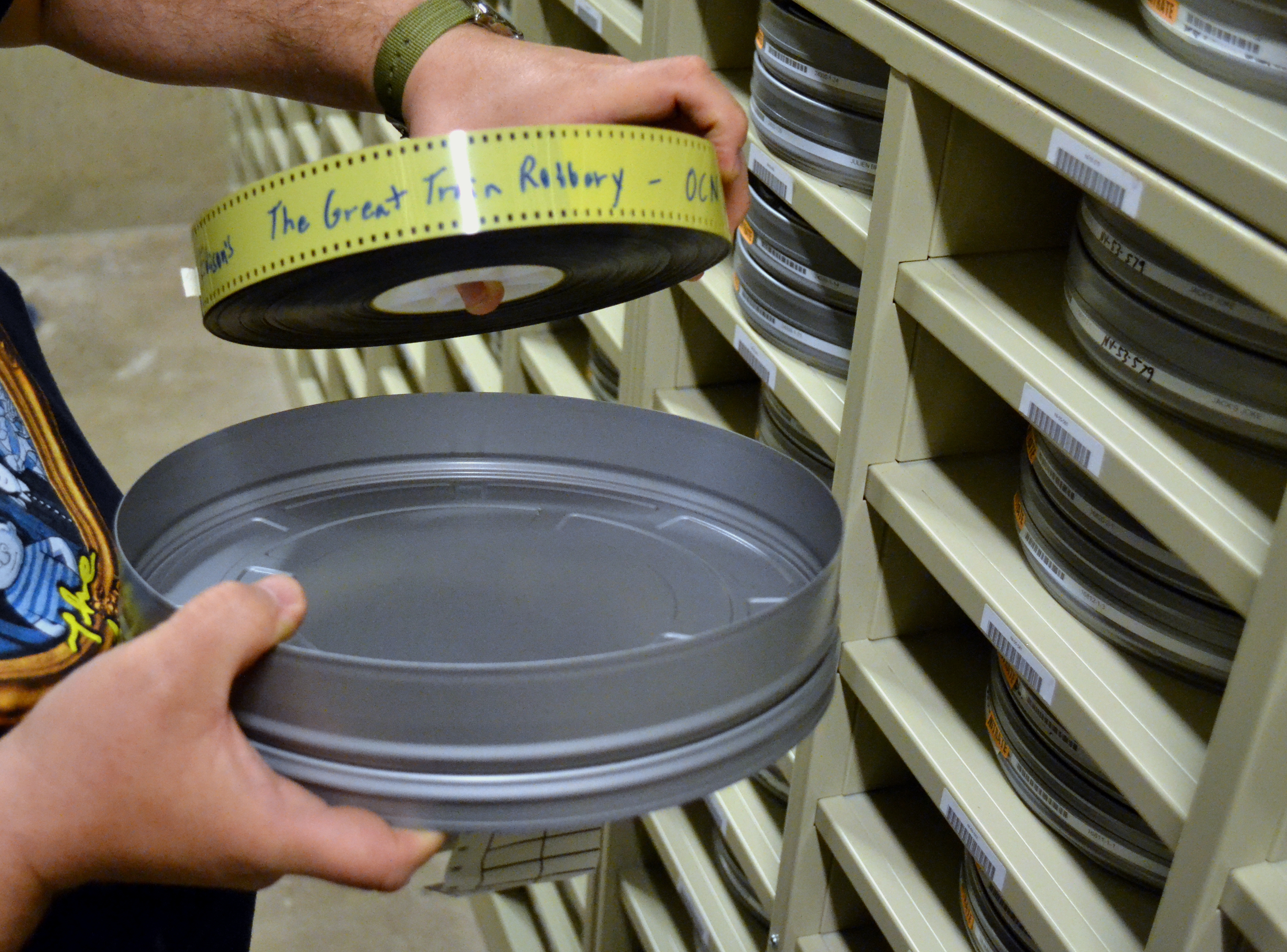
“Here’s the one that started it all!” — The original camera negative for The Great Train Robbery (1903).

Copyright submission for a film reproduction of an 1899 boxing match.

September 9th, 1899.

Copyright law didn’t specify rules for moving images, so filmmakers sent in four frames from each scene to copyright them as still images.
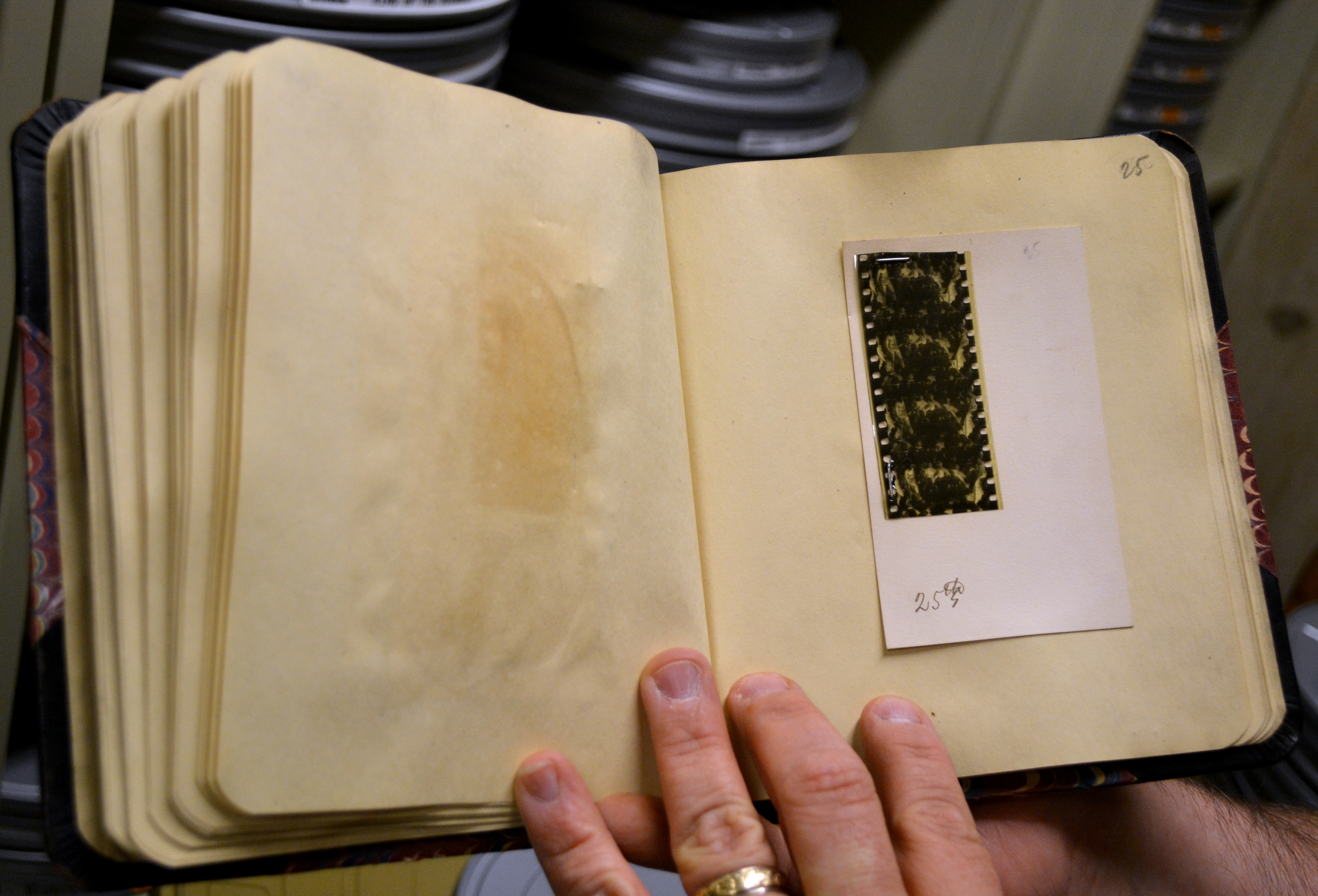
They made it to the 25th round. Looking pretty good for 114 years old.

A nitrocellulose film base was used to a lesser extent for still photography. The nitrate negatives for a lot of the iconic photographs from the Great Depression are stored in this room.
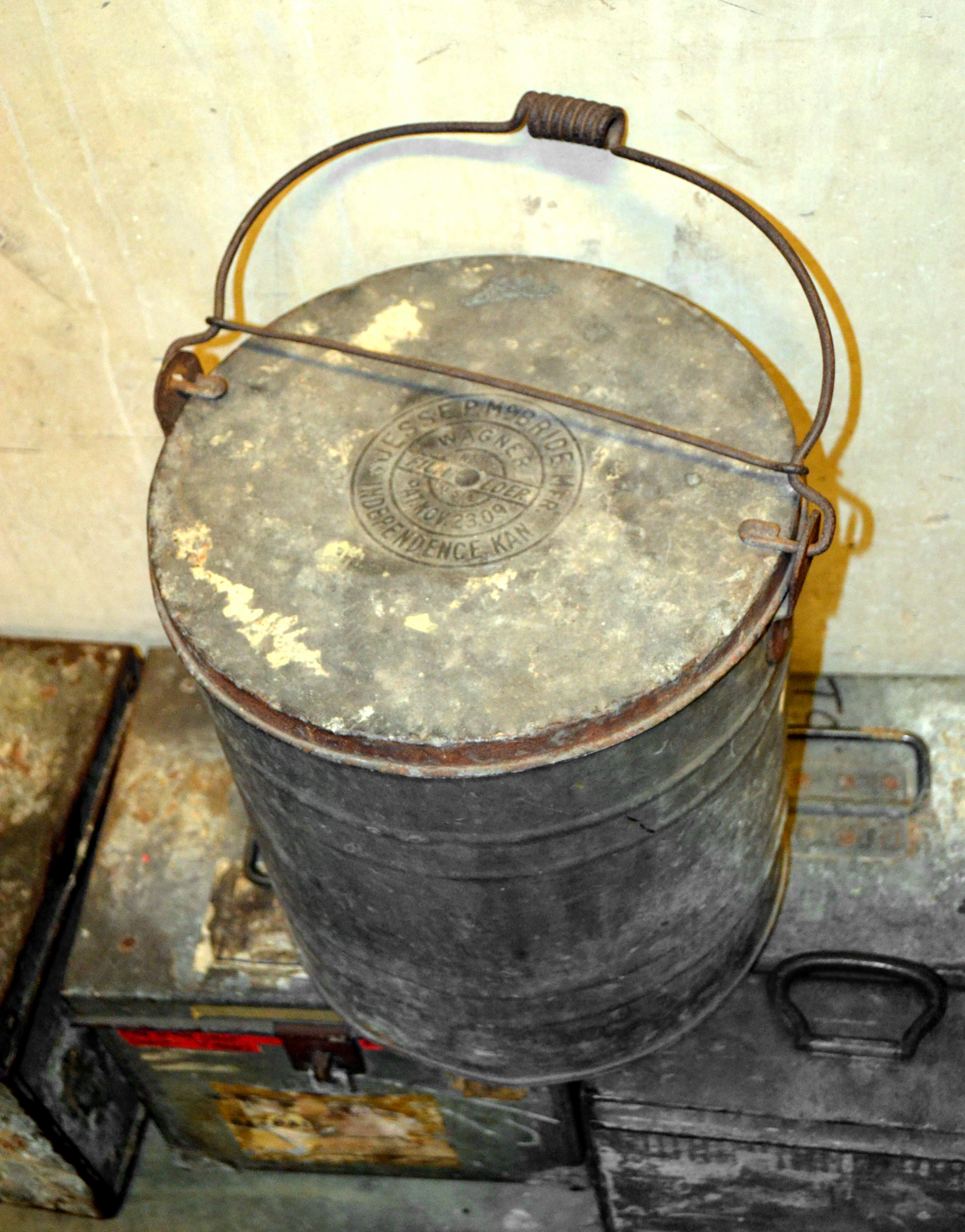
“This one almost killed me!” – When George picked up this can, the decomposing nitrate was off-gassing so badly that he had to open all the windows of his car because the fumes were so noxious.
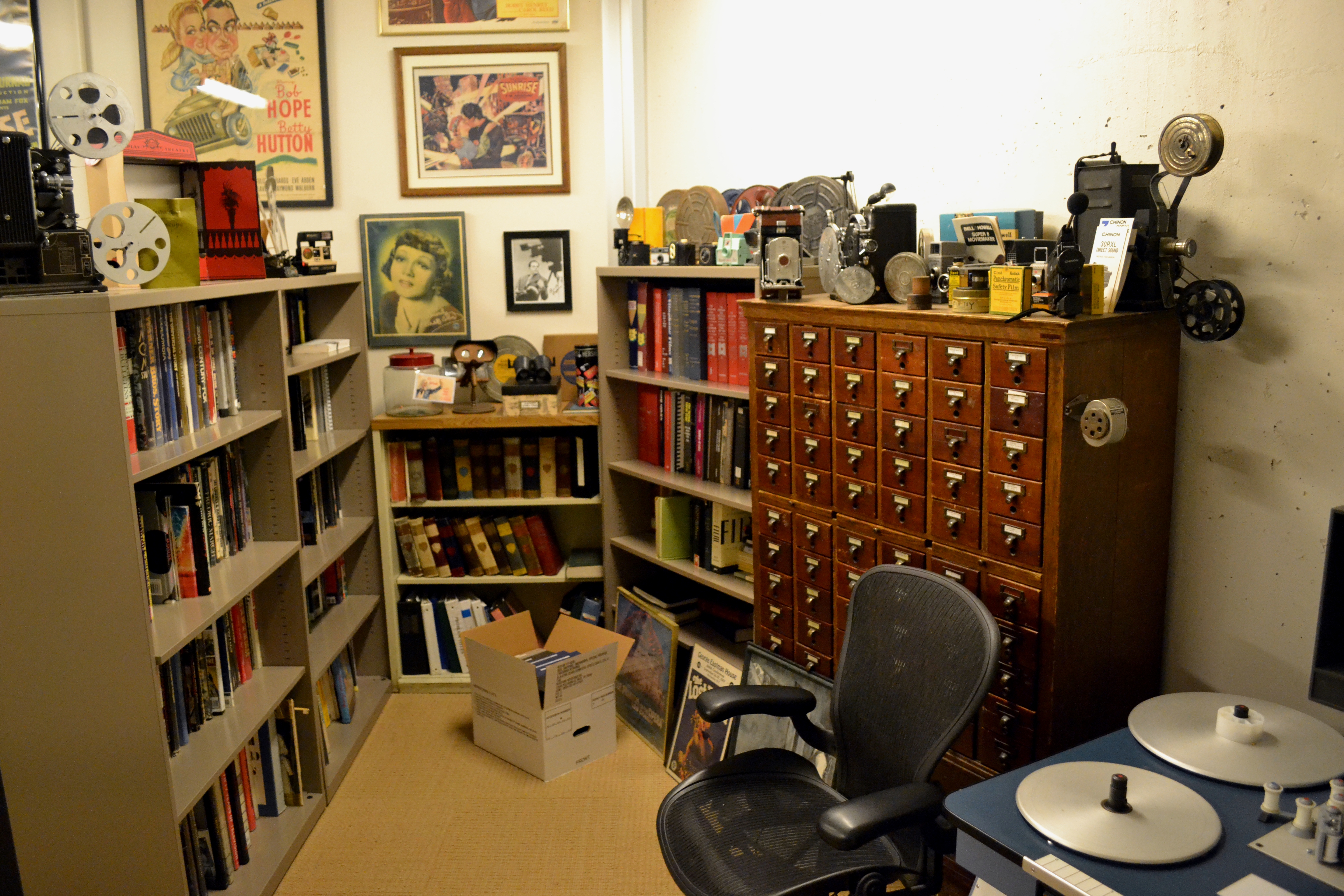
Best office decorations ever.

They have the best toys.

Edison’s Home Kinetoscope (1912), the first home projection system. The lamp housing has been removed to show the carbon arc. Each 22mm reel contained three sets of exposures. It was equipped with two lenses and three side-by-side apertures. You would crank the reel forward, backward, and forward again to play through all the images.
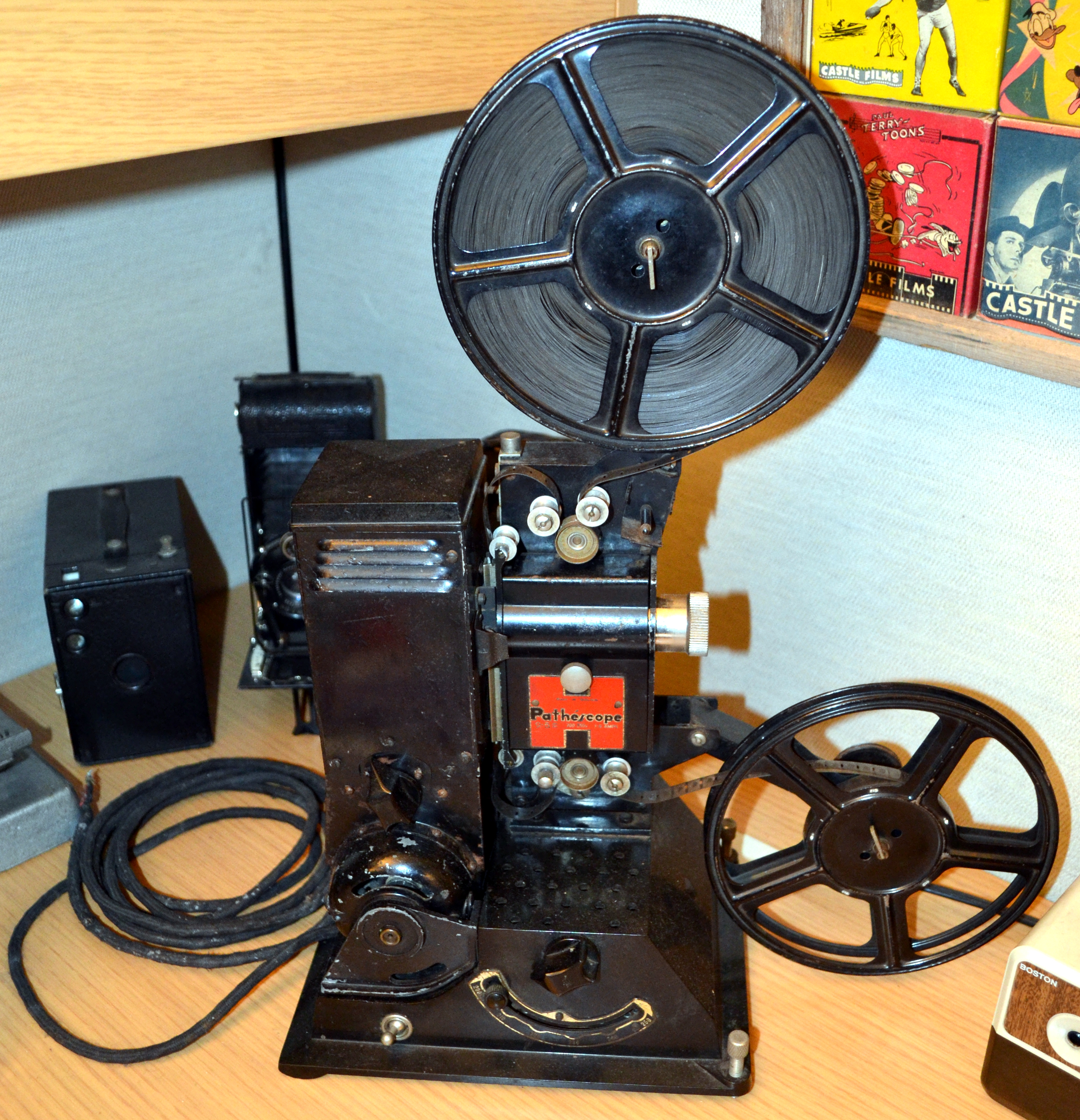
A 9.5mm Pathescope projector. The perforations are between each frame instead of running along the side.

A newsreel camera with a telephoto lens.

The tall unit is an amplifier for Vitaphone, the first commercially viable sound process for film. Look at the size of those tubes!
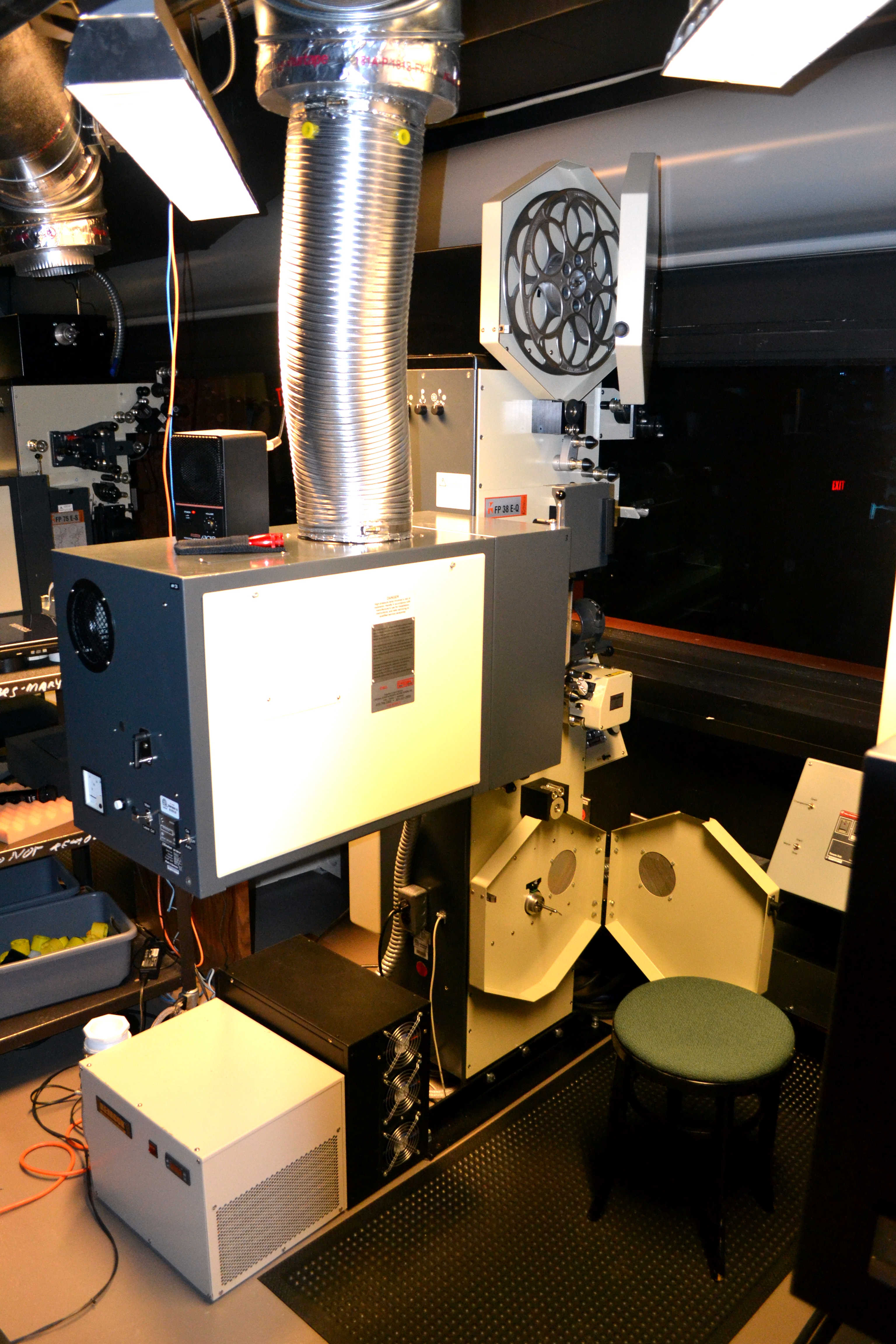
Their projection booth was built by Cardinal Sound & Motion Picture Systems, Inc. to safely project nitrate film. Safety features include enclosed magazines and fire rollers designed to snuff out a flame before it enters the magazines. Unfortunately, the still don’t have any projectionists trained to run nitrate.
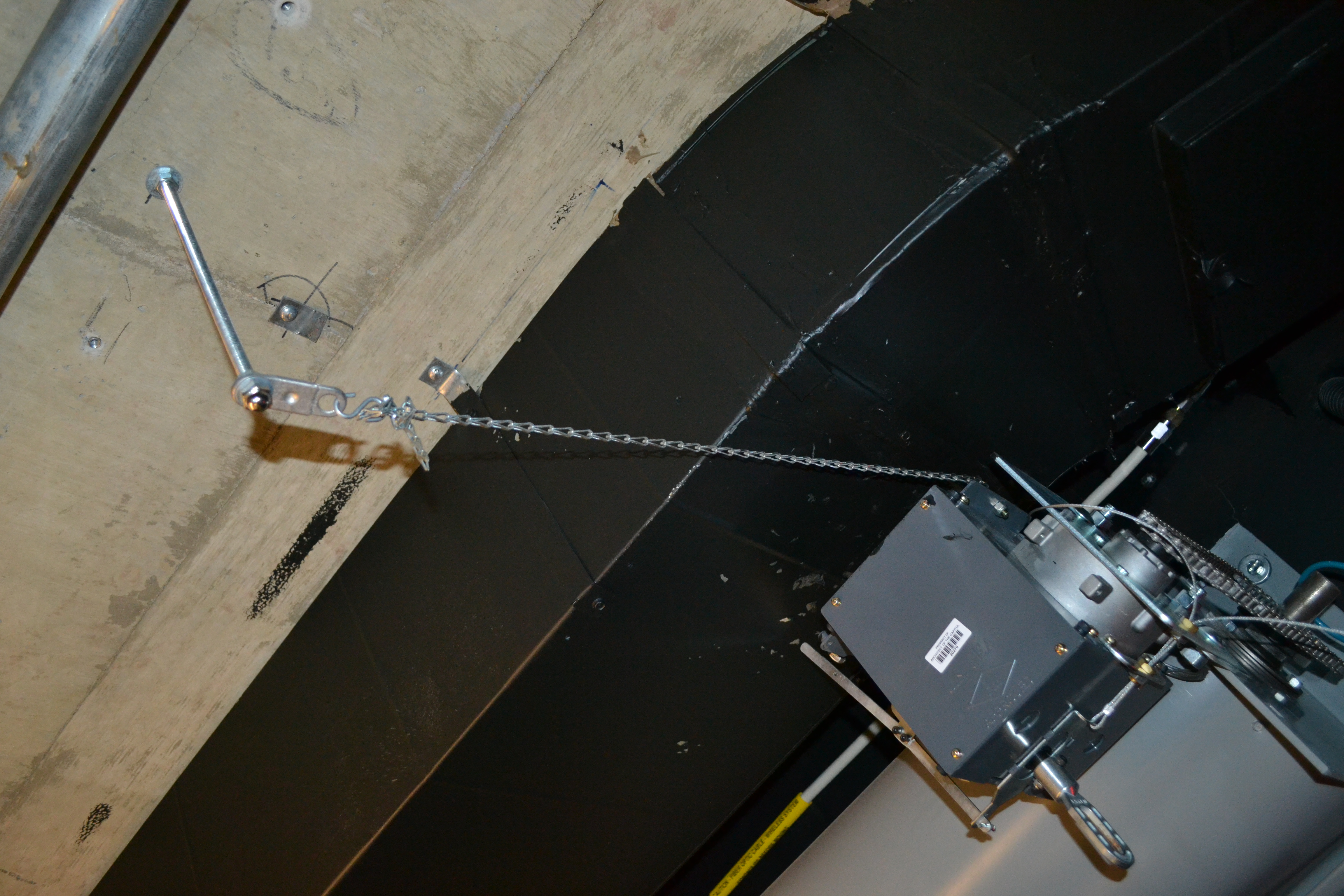
A fire activated linkage that closes off the booth in case of a fire. The linkage is made of a metal with a low melting point, so if a fire breaks out it will melt and the chain will drop, lowering a shield between the booth and the theater. Probably one of the only one of these still functioning in the world.
To give you an idea of how dangerous nitrate is, here’s a video of a single reel (about 20 minutes worth) going up in flames. You can jump to 3:45 to go straight to the fireworks:
Of course, this is film that has been purposefully set of fire. Nitrate was the standard for film presentation for more than half a century, and while projectionists had to be far more careful, accidental fires weren’t that common.
To see more beautiful nitrate, check out the Nitrate Interest Group on Flickr.
Categories: Doylestown, Photography
Check out this handsome gent. No name is recorded, but the photographer’s logo on the back of the card shows that the portrait was taken by B. Billian in Doylestown. Someone more familiar with historic fashion trends might be able to come up with a tighter age range based on his apparel, but based on the photographic process (a carte de visite) I’d offer a date of around 1870.
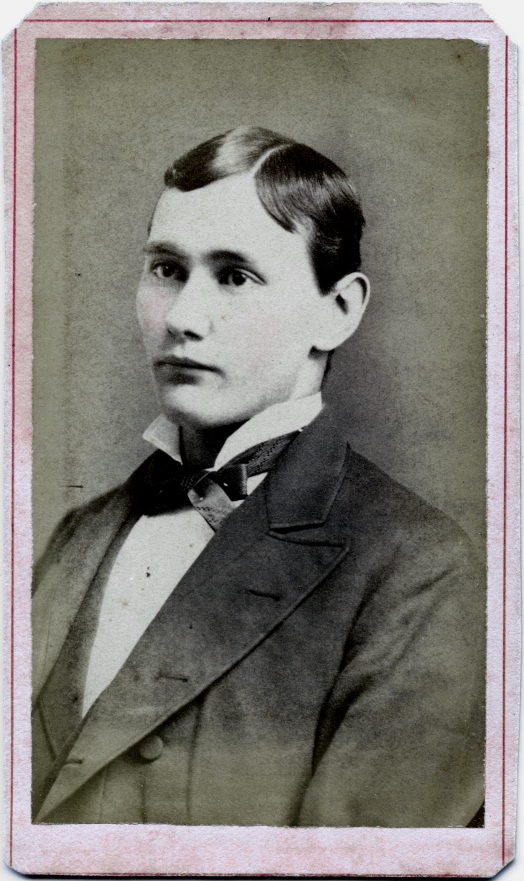
The photographer’s logo on the back:

Categories: Art, Carversville, Photography, Solebury
Categories: Doylestown, Industry and Technology, Maps
Check out this interactive map I put together of Doylestown from 1886. You zoom in to find familiar buildings or see places that have long since been destroyed. Some details I enjoyed were the old fair grounds on the top right, where CB West is now, the fact that the jail (now the Michener Museum) was pretty much in the middle of nowhere, and the road leading out of town called “Lumberville Road”, which I’m guessing is now Cold Spring Creamery. I also wonder what sort of booze they were cooking up at the fruit distillery.
Categories: Land Use, Maps, Native American History, New Hope, Quakerism, Solebury

Oliver Paxson’s house is marked as #29 in this map from WWH Davis’ History of Bucks County
Oliver Paxson was a prominent member of the Religious Society of Friends, and was one of the first residents of New Hope. His home, known as Maple Grove, still stands in New Hope immediately to the east of the New Hope-Solebury school complex. He also operated a stable and a salt store, now Hearth restaurant around the corner from Farley’s Bookshop.
In this letter, published in the first volume of Friends Miscellany (1831), Paxson considers the issue of settling land that has been expropriated from the Indians by force. Paxson presents a surprisingly nuanced and empathetic perspective on the conflict between Indians an European settlers. He believes that Indians own the land they lived on, and that Europeans who want to rightfully occupy that land must purchase it from the Indians on mutually agreeable terms. This stands in sharp contrast to the view of many of his contemporaries, who believed that Indians didn’t actually own the lived on because they didn’t use it properly (“wasting” it as hunting grounds, etc.) and that Europeans farmers were therefore justified in appropriating it. Paxson also believes that capturing land in war or compelling Indians to sell their land through force of arms does not bestow a legitimate right of ownership. When the government has taken Indian land by force Quakers still have an ethical obligation fairly compensate the rightful owners. Otherwise, they’re complicit in the theft of native property.
To support his argument, Paxson cites instances in which Europeans appropriated native land by force resulted in violent reprisals and outright war, and compares that violent outcome to the peaceable outcome that occurred when Quakers made agreements with the Indians to purchase their land on fair terms. William Penn knew that his royal grant did not absolve him of purchasing the land from its true owners, and when a group of Quakers settled in Virginia on land that hadn’t been fairly purchased, the Philadelphia Yearly Meeting raised money to compensate the Indians, “which had a good effect among the tribes.”
He then cites the biblical precedent in the story of Naboth. In that story, the Jews had a different theory of land ownership than the Baalist king. Naboth owned his farm by right of inheritance, and was required by Jewish law to pass it on to his own heirs in turn. Ahab demanded to purchase it as one would purchase an alienable commodity. Because Naboth couldn’t sell his land, Ahab murdered him and stole it, and the prophet Elijah brought God’s wrath upon his family. Quakers, Paxson implied, should not go the way of Ahab.
The letter probably dates to 1802.
TO JOHN SIMPSON OHIO.
New Hope, 5th of 4th mo.
DEAR FRIEND,
I have had a share of thy kind remembrance, with many other friends in the place of thy nativity, which I have no doubt has been gladly received by all the friends thou hast written to; and I thought I felt under some obligation to answer thee. But alas! what shall I say? When I think of writing a letter of social friendship, there is a subject that more or less, for fifty years, hath exercised my mind, and greatly so, of latter times:–that is, the situation of the Indians, unto whom this great and populous country once belonged.
Thou hast often heard and read of the wars in New England and Virginia, in conquests over them, and taking their lands. Not so, when William Penn came to Pennsylvania:–a man who had learned his Master’s lesson, “to do unto all men as he would they should do unto him.” This made his name honourable among the Indians, and it remains so to the present time. But after some time one of his successors, not keeping strictly to this rule, overreached them in a purchase in an extraordinary (or shall I say extravagant) day’s walk, and they revenged it many years afterward, when an opportunity offered, by killing and taking into captivity, many of the white inhabitants. Thou and I can remember these things. How our very ears were made to tingle!
Well, time passed on, till the revolutionary war began. The poor Indians hardly knew what part to take, fearing they should lose all their country in the quarrel between nations of white people; especially if it should turn in favour of the United States (as it finally did) and some of the Seneca Chiefs addressed General Washington near the close of the war, made their submission, and remain peaceably on their reservations in the State of New York.
What comes next to be considered is the state of the country thou livest in. About this time, the white people near the Ohio river went over and made settlements on their lands. They complained of their land and game being taken from them, and found no redress. At length they took up the hatchet, and skirmishing on both sides of the river ensued. The President by this time, thought it his duty to endeavour to put a stop to it, and appointed commissioners to treat of peace, and purchase their land. They met, divers Friends attending, viz. John Parrish, Joseph Moore, Jacob Lindley, and some others. The Indians appeared in a hostile, angry mood, and told the commissioners, they would sell them no land;–but required them to remove the white people that were already settled over the river. The treaty broke up, without doing any thing, and hostilities continued: in consequence of which, the President ordered an armed force to defend the frontiers, and bring the Indians to terms. Sinclair their general. About this time the Meeting for Sufferings was sitting, and a heavy exercise came over the meeting on this account, and a committee was appointed to wait on the President, to intreat him to stay the sword:–which they did in a solemn manner, but all in vain. The expedition was pursued. Sinclair defeated, and many fell in battle. But it did not stop here. A greater force was raised, and a general appointed, more skilful in fighting the Indians, and effectually subdued them; and many of the rightful owners of the country, fell down slain in battle, in defending their just rights:–terms of peace were offered, which they declare, they were forced to accept, it being a price very inadequate to its value.
I do not mean by this, to arraign the government. The United States is a warlike nation;–and conquests made by the sword, are commonly applied to the account of the conquerors. So that in this view of things, it may be considered as an act of generosity in the government to pay the Indians twenty thousand dollars, for a country worth an hundred times that sum. But this wont do for thee nor me, who profess to be redeemed from the spirit of war, so as not even to buy a coat, if we know it to be a prize article. Thou may remember the concern brought on our Yearly Meeting by a few families of Friends in Virginia, who were settled on land not fairly bought of the Indians, and a sum of money was finally raised by Friends in Philadelphia, as a compensation, which had a good effect among the tribes.
I must close this singular epistle, by just observing, that when thou wast concerned some years ago, to publish the glad tidings of the Gospel of peace and salvation to the inhabitants of Ohio, my heart went with thee. And had that been thy sole concern when thou went last, I could again have said Amen. But when I took a view of thy wife and children, going with thee to settle in the country, to buy and sell, and get gain, I was not able to go thy pace. My heart is, nevertheless, filled with tender affection and sympathy for thee, thy dear wife, and her children; and I am persuaded, thou hast not seen the thing in the light I view it, or thou would hardly have taken so much pains to induce Friends to settle, in such numbers, in a land obtained in the manner I have mentioned. Naboth must die, because he refused to sell his inheritance to Ahab; though Ahab offered to give him the worth of it in money, or give him a better for it; yet he would not sell it.1 Mark the sequel. If the Province of Pennsylvania must be visited with the horrors of an Indian War,–many of its inhabitants slain, and many carried into captivity–for one man’s offence, in overreaching the Indians in the purchase of land from them;–what may we then expect in the instance before us? The Indians did refuse to sell their inheritance, till many of them were slain, and they were compelled to it. And would it be a strange thing, if an opportunity should offer for the Indians to revenge their wrongs–if the earth, that hath opened its mouth to receive the blood of the rightful owners of the soil, should again open its mouth to receive the blood of white inhabitants? Which judgment may be averted by acts of righteousness, is the sincere desire of my soul. From thy friend,
OLIVER PAXSON.
1In the Old Testament, Naboth owned a small vineyard next to the palace of King Ahab, who wanted to buy the land. Naboth was forbidden from selling the land by Jewish law. After his offer was rebuffed, Ahab had Naboth killed in order to seize his land. As a result, the prophet Elijah prophesies Ahab’s destruction as punishment for murdering Naboth and stealing his land. (http://en.wikipedia.org/wiki/Naboth)
This map of the Solebury Friends Meeting graveyard was drafted in 1907, based on an earlier map from 1866. Unfortunately the 1866 map has suffered some damage and it’s difficult to make out most of the handwriting. The handwriting matches that in the burial book in the Swarthmore archive, which also dates to 1866. That book makes reference to a previous burial chart used as a reference for the 1866 map. It cites “extracts from the old chart” about decisions the meeting made about laying out the graveyard. There are also sections in the list of graves in which the writer of the 1866 book omits names, stating that they were illegible on the old chart.

In all likelihood this original map no longer exists, and the names omitted on the 1866 map are probably lost forever.
The 1866 and 1907 maps were almost lost as well. My great-grandfather used them as a reference when creating the modern burial map in the 1960s. Apparently he never returned the maps to the meeting, and I found them in a box of maps that had been stored in my family’s barn.
I deposited them in the archive of the Friends Historical Library at Swarthmore College along with the rest of the meeting’s original records. While there, I used their excellent overhead scanner to digitize the maps. Click on the map above to see the full image.
Categories: Abolitionists, Buckingham, Graves, Langhorne, Maps, Middletown, Plumstead, Quakerism, Solebury
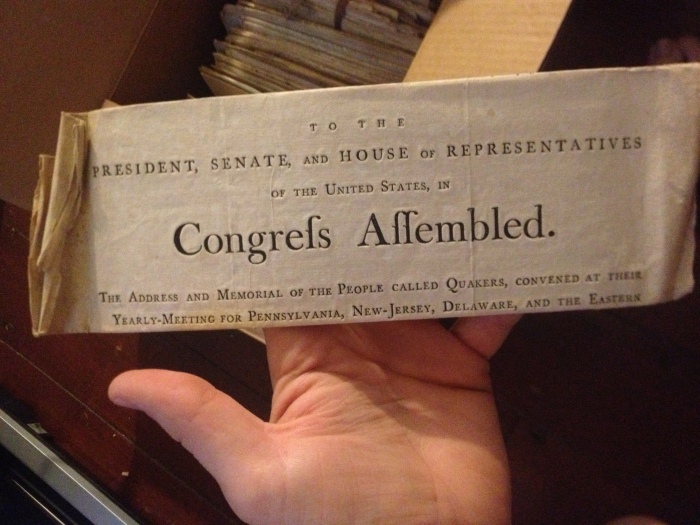
A few months ago my grandfather decided to a do a little spring cleaning. There was a storage unit in our barn that hadn’t been touched in years, full of mildewy furniture and worthless miscellany. He came across a metal container full of maps, mostly showing local topography and zoning. My aunt suggested that I might want them, so they escaped the trash heap.
When I got down to the barn I found a pile of mostly junk, covered in a plastic tarp because we were expecting rain. I found a few items worth keeping: the sled my great-grandmother had when she was a little girl growing up in Battle Creek, Michigan, a wooden tricycle that belonged to my grandfather, and a few plastic trucks for my son to play with. I found the box of maps and popped open the latch, and immediately knew that the contents were far more important than my grandfather had realized.
There were dozens of maps, but among the rolls of paper I recognized a draft of the map my great-grandfather made for the Solebury Friends Meeting burial ground in the 1960s. Then I noticed another roll that was clearly a much older material. With the box sitting in the gravel driveway, I rolled the map out a few inches and discovered that it was in fact two maps rolled together.
The first was from 1907.
The second was from 1866.
They were the original maps that by great-grandfather used as a reference for the modern map, and they’d been sitting in our barn for decades, totally forgotten.
I called the person currently in charge of the graveyard to tell him about my find and offered to bring it to the Friends Historical Library at Swarthmore College to deposit it with the rest of the Meeting’s original records, and I held on to them for a few months until I had time to make the trip.
A couple weeks ago I finally I finally had a day off, and decided to bring the maps to Swarthmore. My timing was fortuitous. That Monday I led a graveyard tour at Plumstead Friends Meeting. We assembled in the meetinghouse, and as I led the group outside towards the burial ground, a woman approached me with a box of documents about the meeting. At the time I was too focused on the tour to discuss it, and suggested that she talk to the clerk of the meeting. The next day, however, I was consumed by curiosity. I already had plans to go down the the Friends Historical Library that week, and thought I might be able to bring those papers as well. Luckily I ran into her in Doylestown a couple days later and proposed that I take them for her. She agreed.
When she dropped the documents off the next day, she brought a lot more than the Plumstead material. She also brought a collection of documents from Buckingham Meeting, and there was so much that it took her two trips to unload it from her car.
The Plumstead material turned out to be the notes and research prepared for a pamphlet published for the meeting’s 225th anniversary celebration on 1953, as well as notes about the ceremony itself. There were also two large photographs that were used in the pamphlet, one from c.1875, and one from 1953.
The Buckingham material was rather varied. One box contained about a dozen copies of the book published for Buckingham Meeting’s 225th anniversary in 1923, as well as a block print of the meetinghouse that was used for that book. There was a folder with newspaper clippings and other 20th Century material. Finally, there was a cardboard box that had been saved from Buckingham Meeting by the woman’s father. At some point a few decades ago, the members of Buckingham meeting had decided to indiscriminately “clean” their attic, and this box was a subject of the purge. Like the burial map from Solebury, these documents were almost destroyed.
When I opened this final box I got goosebumps. I could tell by looking at the parchment that they were old. Really old. Most of them were tied together with string into little bundles, with a few groupings of loose papers between them. I saw the date “1776” peeking out from one of the bundles. When I brought them home and examined them further I found that some documents dated back to the beginning of the 1700s, and in addition to material from Buckingham, a lot of the documents actually came from Middletown Monthly Meeting. Most of them were excerpts from annual conference of Philadelphia Yearly Meeting, and epistles from the yearly meetings in London and Philadelphia. Some were testimony against members of meeting, or letters from people willingly leaving the Society of Friends. There were a few more recent documents that dealt with the Civil War. Perhaps the most interesting document is a letter written from a Quaker aid mission during the British occupation of Boston. She had kept them in storage for years, hoping to eventually deposit them in the archive, and I was finally able to bring them for her.

For the sake of brevity, I will show the individual documents in separate posts: